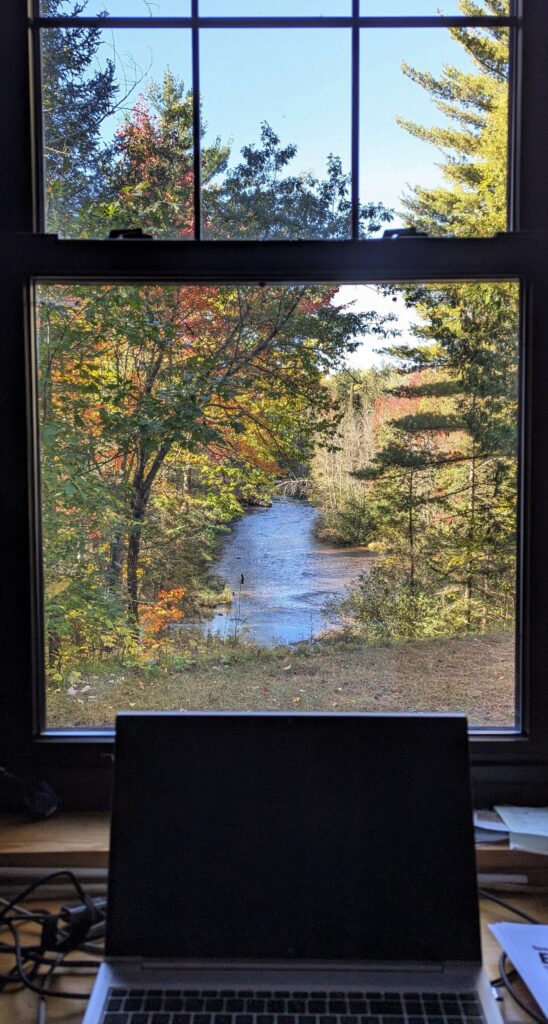By Olivia Witthun, DNR Urban Forestry Coordinator; Olivia.Witthun@wisconsin.gov or 414-750-8744
 Employee attitudes and well-being improve with exposure to nature. Think about it. Every weekday we commute to work, only to be met by a dark cubicle in shades of beige and grey. Ever wonder why your mood starts to match the walls? It’s because the workplace environment contributes to employee health. We’ve known this to be true (anecdotally) for a long time, but mounting scientific evidence proves our urban and community forests have beneficial effects on employee performance.
Employee attitudes and well-being improve with exposure to nature. Think about it. Every weekday we commute to work, only to be met by a dark cubicle in shades of beige and grey. Ever wonder why your mood starts to match the walls? It’s because the workplace environment contributes to employee health. We’ve known this to be true (anecdotally) for a long time, but mounting scientific evidence proves our urban and community forests have beneficial effects on employee performance.
Employees with a view of nature from their desks experience a myriad of benefits. They 1) find their job more challenging, 2) are less frustrated about tasks, 3) feel greater enthusiasm for the job, 4) report feelings of higher life satisfaction and 5) report better overall health than their coworkers without a view. Conversely, the absence of nature views is associated with higher levels of tension and anxiety in office workers. Additionally, desk workers without a view of nature claimed 23% more incidences of illness over a six-month period.
Exposure to nature also reduces employee stress. Employees with more contact with nature at work report significantly less perceived stress and stress-related health complaints. As contact with nature during the workday increases, there is a decrease in perceived stress and general health complaints by employees. Stress negatively affects mental health and increases the likelihood of chronic diseases, including heart disease and cancer. The importance of nature and trees cannot be understated.
Employers can improve employee attitudes, health and well-being simply by altering the work environment to increase employees’ views of trees and nature. Increasing contact with nature at work could also provide a simple approach to enhancing workplace health promotion efforts. Ideas to implement the concept may include increasing access to views by lowering or eliminating cubical walls and swapping rooms that block views with an open-concept type layout. Take it a step further and increase the landscaping surrounding the building. Plant large canopy trees that can be seen from multiple locations and levels. Trails and seating areas invite employees outside to walk and relax.
There is also a lot of research around biophilic design and bringing the outdoors in. The theory is that humans have an innate attraction to nature because of our long history of being dependent on nature. This deep connection persists and may explain why the experience of nearby nature may help people perform better in the office. Incorporating natural elements into the built environment can happen even with existing buildings. Decorate with plants, pictures and wooden elements. Sounds and smells from nature can even be incorporated.
Give your employees the gift of happiness. Reduce their stress by encouraging them to get outside and finding ways to bring the outdoors in. Job performance will increase as employee well-being increases.
For more information and links to published research, visit Vibrant Cities Lab’s Human Health webpage.
